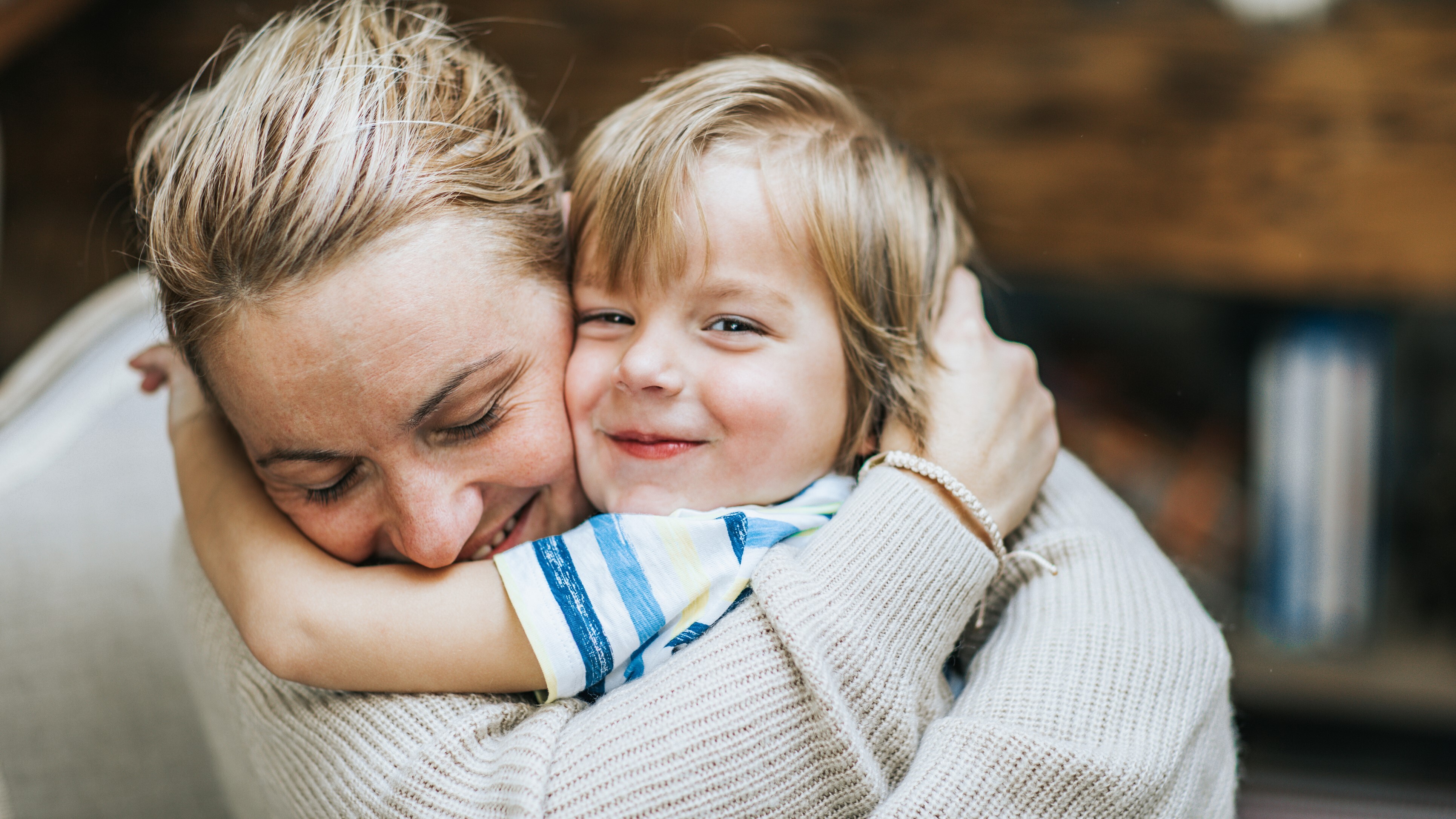4 Essential Steps for Raising Money-Smart Teens
Sponsored Content from Capital One
A teen-friendly checking account provides a safe way for young adults to learn how to manage their own money
Money management is a critical life skill, but most kids don’t learn it in school. So, what’s the best way to help them acquire this fundamental experience?
When it comes to teens and preteens, it’s important to offer as much independence as possible, as well as a few limits to keep them safe. Here are four steps parents and guardians can take to give kids a solid start.

Sign up for Kiplinger’s Free E-Newsletters
Profit and prosper with the best of expert advice on investing, taxes, retirement, personal finance and more - straight to your e-mail.
Profit and prosper with the best of expert advice - straight to your e-mail.
1. Set them up with a checking account
A checking account provides teens a safe place to keep earnings from a job, an allowance or cash gifts. It also gives them the ability to make purchases—both online and out in the world—without having to rely on adults.
Allowing kids to make purchases from their own account helps them become familiar with the value of money. Jamie H. of Pennsylvania recently opened a checking account for his 15-year-old daughter, so she could easily make online game purchases—and develop more hands-on experience with the ins and outs of saving and spending.
Jamie says once his daughter had her own account and started using her own money from household chores and a part-time job, her spending habits changed. One day recently, he noticed her questioning whether she really needed to make an in-game purchase at all. “That's the first time she's ever done that,” he says. “It just drives home that when they are managing their own money, it makes them look at purchases more responsibly.”
Teen-friendly accounts like the Capital One MONEY teen checking account typically offer features that can help parents teach important lessons about money management. For example, the account for Jamie’s daughter allows her parents to set a spending limit. Jamie set the limit for $30, so she would need a parent’s permission for any purchase exceeding that amount. That gives him some peace of mind, while reinforcing the teen’s newfound commitment to resist impulsive spending on game enhancements.
Because teens have less experience managing money, it’s also important to find accounts that protect them from potential pitfalls. For example, the Capital One account offers a free debit card, plus access to a large network of fee-free ATMs and no minimum balance requirements. And just as important, if a teen is struggling to use the debit card responsibly, parents can quickly hit pause by turning the card “off” within the Capital One Mobile banking app. When the times comes, the card can be turned back on just as easily.
Finally, many parents, grandparents or guardians want to provide teens with an allowance or periodic cash gifts, so kids can practice spending wisely. Any adult with a Capital One account can transfer money to a teen’s account with a few simple clicks. And that can be a big time-saver for busy people.
- Explore more teen-friendly account features.
2. Make sure they have access to an easy-to-use mobile banking app
Gen Z is known as the “touchscreen generation” for good reason. A user-friendly mobile banking app is an essential tool for teens: It helps them take a hands-on approach to money management by making it easy to check their account balance, review transactions and monitor their savings. Giving teens the ability to manage their money on their terms—whenever they choose and wherever they are—keeps them engaged in the learning process.
When Rohan A., a college student in Washington, DC, opened his first checking account as a high school freshman, his bank’s mobile app was a critical tool. “I used to sit down with my dad, look at my account and review where I could limit my spending,” he says.
Having access to the real-time information, along with those regular check-ins with his dad, really inspired Rohan to adopt good money habits. He says that, over time, he began spending considerably less.
Indeed, a good app can keep parents and teens working well together. The Capital One Mobile app encourages teens to set goals and provides charts and other visuals to keep them motivated. Parents have their own dashboard, so they can monitor activity and progress without compromising their child’s feelings of independence. And everyone can celebrate important milestones and successes together.
- Retain visibility and control over your teen’s spending with a separate mobile app login for parents or guardians.
3. Teach them how to build and manage a budget
Many of us intuitively understand that mastering new habits requires trial and error. It’s true for most new skills, but it is particularly the case for creating and sticking to a budget.
As teens learn to monitor their cash flow, parents, guardians or grandparents can help by sitting down with them to review the basics:
- How much money do they receive from doing chores, an allowance or a part-time job?
- How much will they spend?
- How much will they save?
- What kinds of experiences or big purchases will they plan for?
Budgeting strategies can be an essential part of these conversations. Jamie H., for example, used the 80/20 rule with his daughter, encouraging her to use 80% of her earnings however she wants, while putting the remaining 20% into savings. That basic budgeting guideline has helped his daughter think more carefully about which purchases are important to her and which she can live without.
And you may find, as Jamie did, that once your teen manages their own money, they become eager to build on their initial successes. In that case, you can take the opportunity to discuss different income streams and help them brainstorm how they might earn more money—for example, by doing chores around the house, babysitting or lawnmowing for the neighbors, or taking on an after-school job.
- See more on “Teaching Teenagers to Manage Money.”
4. Help them build credit smarts
As teens gain experience managing a checking account, they also gain critical skills that can help them make smart decisions when it comes to more advanced financial tools, like credit cards and loans. You can start by talking to them about the importance of building a good credit history, and how a bad credit score may hurt their ability to get a car loan, rent or buy a house and even get a job.
Using a debit card with spending limits can also help teens build the good financial habits they’ll need to use credit responsibly later in life. Set them up for success by explaining that spending within their credit limit and making payments on time can help them establish a good credit score.
- Find answers to common MONEY teen checking account FAQs.
Selecting the right teaching tool
Opening a teen-friendly checking account can give kids the hands-on experience they need to learn how to manage money, while limiting their exposure to common mistakes.
A great choice: Kiplinger’s Personal Finance magazine recently ranked Capital One the best bank for kids because of its no-fee, no-minimum accounts designed specifically for children ages 8 to 17. Kiplinger’s review pointed to a host of features that make it easy for parents and guardians to teach important financial lessons safely. The guardrails that come with a Capital One MONEY teen checking account—such as no monthly fees, no minimum balance requirements, limits on overspending, and parental controls—give kids a great head start.
Capital One also earned Kiplinger’s gold medal for customer service in the banking category and was ranked #1 overall for customer satisfaction among national banks by J.D. Power.*
With the right account and careful guidance, the lessons they learn will provide an important foundation for financial independence ahead.
- Capital One is ranked best for teen-friendly checking. Open an account for your child today.
This content was created by Kiplinger's custom content studio and is sponsored by Capital One. Kiplinger editors do not endorse the company or products mentioned above.
*Capital One received the highest score in the J.D. Power 2020 U.S. National Banking Satisfaction Study of customers’ satisfaction with their national banking relationship. Visit jdpower.com/awards for more details.
Get Kiplinger Today newsletter — free
Profit and prosper with the best of Kiplinger's advice on investing, taxes, retirement, personal finance and much more. Delivered daily. Enter your email in the box and click Sign Me Up.
-
 Two Don'ts and Four Dos During Trump's Trade War
Two Don'ts and Four Dos During Trump's Trade WarThe financial rules have changed now that tariffs have disrupted the markets and created economic uncertainty. What can you do? (And what shouldn't you do?)
By Maggie Kulyk, CRPC®, CSRIC™
-
 I'm Single, With No Kids: Why Do I Need an Estate Plan?
I'm Single, With No Kids: Why Do I Need an Estate Plan?Unless you have a plan in place, guess who might be making all the decisions about your prized possessions, or even your health care: a court.
By Cynthia Pruemm, Investment Adviser Representative
-
 Financial check-in: 4 smart financial actions to take now
Financial check-in: 4 smart financial actions to take nowSponsored Content from Ameriprise Financial
By Staff
-
 Making College Accessible and Affordable
Making College Accessible and AffordableSponsored Content from Berea College
By Staff
-
 A 2021 roundtable on the positive impact of 529 plans
A 2021 roundtable on the positive impact of 529 plansJoin this engaging and interactive 60-minute conversation with a panel of financial advocates and professionals.
By Staff
-
 Save for College Like a Pro
Save for College Like a ProSponsored Content by Capital Group
By Staff
-
How to Earn Hundreds with a Cash Back Credit Card
Sponsored Content From CompareCards
By Staff
-
 How to Protect Your Wealth When Fraud is Everywhere
How to Protect Your Wealth When Fraud is EverywhereSponsored Content From IdentityForce
By Staff
-
 How to Pick the Perfect Credit Card
How to Pick the Perfect Credit CardSponsored Content From CompareCards
By Staff
-
 4 Ways to Maximize Your Charitable Impact with DAFs
4 Ways to Maximize Your Charitable Impact with DAFsSponsored Content from Schwab Charitable
By Staff